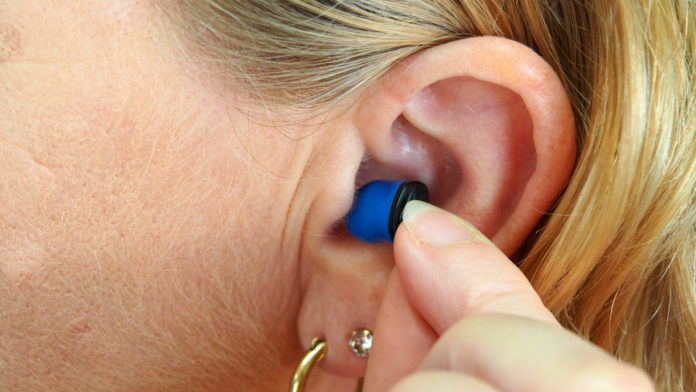What if it was possible for users to power their own hearing aids without ever having to plug them into a charger?
Hearing aids are getting smaller and more powerful, but they also need tiny batteries to match. Most still use disposable button batteries. Depending on use, they might need to be replaced as often as every three days. This raises serious environmental and cost concerns and makes maintenance harder for users, many of whom are elderly and don’t have the dexterity needed to change their batteries every few days.
Rechargeable units are starting to gain popularity and diversify into more models to suit different users. This is a welcome upgrade, but if a user only has a partial charge it might not last the whole day, and there’s no way to carry a spare set of batteries. Performance wanes even when power starts to run low, sacrificing an important way to connect with the world.
Acoustics specialist Jérémie Voix, professor of engineering at Montreal’s École de Technologie Supérieure, is working on a new way to recharge those batteries while users are simply living their everyday lives. The power source is fully renewable, and no chargers or electrical outlets would be needed at all.
“Here’s a small experiment: insert your little finger in your ear, then open and close your mouth,” writes Michel Demuynck, a doctoral candidate in Voix’s lab, in an article for The Conversation Canada.
“Do you feel the pressure change on your fingertip? Jaw movement compresses the tissues around the ear canal, changing its shape. Researchers propose converting this deformation inside the ear into electrical energy.”
The team is evaluating exactly how to harness the energy of these deformations using a wearable earpiece. Using an earplug filled with water, they recorded the pressure from the ear canal deformations of six volunteers as they ate a meal. They found that just 50 minutes of chewing can potentially provide enough power for the entire day, which can easily be accomplished during usual meals.
The next step is to figure out how to take that mechanical energy and efficiently capture it as electric energy. Piezoelectric materials, which generate an electric signal when deformed, are an option currently being studied. So far, these prototypes haven’t been able to harness enough energy while remaining small enough to be integrated into today’s rigid hearing aid designs. With the development of flexible printed circuit boards, getting more deformation out of the ear canal’s movements may make this route more feasible.
Harnessing the energy of human movements to power devices has potential for many applications, in ways that feel effortless to users. It would also enable a renewable energy source that decreases the environmental burden of single-use batteries. That should be music to all of our ears.








































